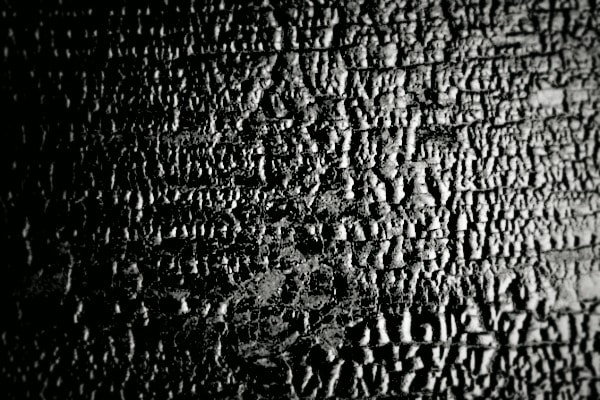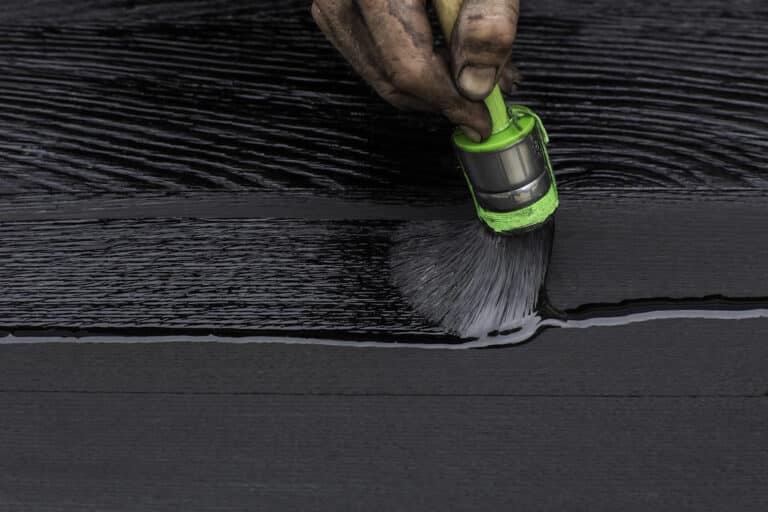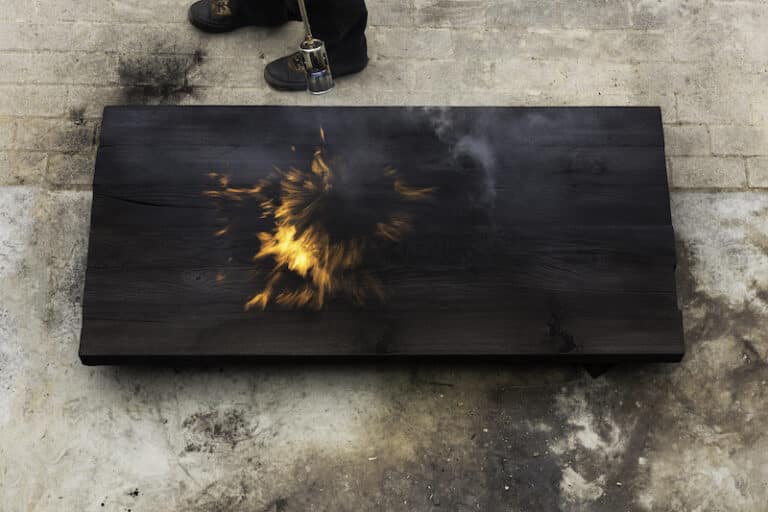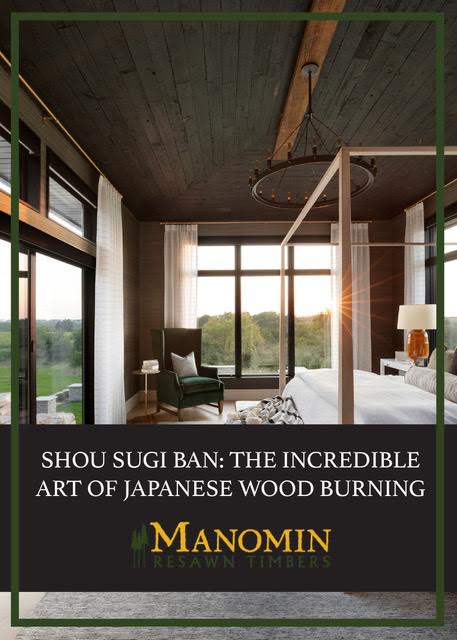Shou Sugi Ban: Everything You Need To Know (DIY Guide)
You’re looking for a building or finishing material that’s low maintenance, resistant to insects, rot, and decay, while being sustainable, eco-friendly, with a signature look that’s unlike anything else—Japanese wood burning-treated wood, Shou Sugi Ban, is perfect for your next project. Interior design can be so boring but this Shou Sugi Ban is a way to make your home unique. From paneling to siding,

By mrtimbers | Updated November 1, 2022
You’re looking for a building or finishing material that’s low maintenance, resistant to insects, rot, and decay, while being sustainable, eco-friendly, with a signature look that’s unlike anything else—Japanese wood burning-treated wood, Shou Sugi Ban, is perfect for your next project.
Interior design can be so boring but this Shou Sugi Ban is a way to make your home unique.
From paneling to siding, Shou Sugi Ban wood can make for the ideal addition to your home, office, or latest design project. No matter what your project is, include Shou Sugi Ban wood into your design to give you a unique and chic look.
Why Choose Shou Sugi Ban?
Why has this charred wood become so popular? Aside from its natural beauty, wood that has been treated with fire becomes more fire-resistant. Ironic. But not only does the wood become more fire-resistant, but it also becomes more resistant to some of today’s most troubling household concerns, such as insect infestation, rot, and decay. Designers across the country are turning to this unique material to deliver impactful and long-lasting beauty and function to their client’s projects.
Shou Sugi Ban treated wood can be used for just about any application. Be it paneling or siding, whether your project is indoors or outdoors, this specialty wood can make all the difference in your next design.
Dramatic and Trendy
Why have standard walls with paint and if you could have a dramatic and trendy wood burned wall that stands out? And as an additional advantage, nobody else is using this technique making it all the more original.
Black is the New White
Black is very popular right now and on the rise for being one of the most popular colors of the year. Burned wood takes on a shade of black for your home that looks awesome and can fit almost any decorative style. And, you'll be starting your own trend by playing a spin on the black accent wall trend.
High Stability
Another significant advantage of using Japanese wood burning-treated wood is the finished product’s dimensional stability. The Shou Sugi Ban process provides greater dimensional stability within your wood, making this an ideal choice for those who live in regions that experience a wide range of temperatures and environmental conditions.
Dimensional stability refers to how wood shrinks or swells concerning moisture loss or gain from changes in temperature and conditions. Shou Sugi Ban wood has higher dimensional stability than that of regular wood, meaning that it won’t warp or bend when exposed to the changing seasons.
Insect Resistant
As mentioned above, the process of Japanese wood-burning makes wood insect resistant. While the wood is burning, the same flames that are transforming your planks will neutralize the cellulose naturally present inside the wood. This process makes the finished product undesirable to bugs, keeping your home insect-free.
Low Maintenance
The last benefit of Shou Sugi Ban wood is the lack of maintenance required to keep your finished project looking good. While some wall finishes or accent pieces require frequent upkeep, such as waxing, steaming, or oiling, Shou Sugi Ban paneling and siding can last up to 80-100 years without maintenance.
How to Create Shou Sugi Ban Wood
Creating this artful type of wood isn't necessarily easy. At least not if you want to master it perfectly. However, it is possible to come close and, of course, to get better the more you try. Here's how you can attempt to create your own Japanese burnt wood.
1. Source the Wood
First up, you're going to need some wood. There isn't a "right" kind of wood, but there are some woods that work better for the process. For those of us living in North America, western red cedar, basswood, southern cypress, or another softwood is best. You Can use the technique with hardwoods, but because they're often more expensive and aren't always suitable for the common uses of Shou Sugi Ban, softwoods are much more common.
2. Burn the Surface of the Wood
When you've got your wood, you'll be ready to start the burning process. It takes a while to build up the artful nature of this burning technique. One way to get a little practice is to use some scrap wood. The traditional yakisugi woodworkers of today use propane-powered blowtorches. These blowtorches offer a lot of heat in very concentrated areas.
Don't be afraid to make mistakes because there's really no way to ruin the wood. But, be sure to have a good feel for how close you need to be to the wood and how long you should have it in one spot.
https://youtu.be/CojWo7XgTwc
3. Remove the Outer Char from Your Planks
After you've got the nice even char on your wood planks, it's time to start cleaning them up so that you can begin the installation process. First, you'll need to use a wire brush or coarse sandpaper to remove that outer brittle char. Be careful not to sand the wood smooth. The technique requires the wood to maintain visible wood grain patterns and a textured surface.
If you're trying to really highlight the grains, bumps, and inconsistencies in the wood, then be sure to go easy with this step.
4. Apply a Finish to the Wood
And lastly, you'll be able to apply a finish to the wood so that it's ready for the elements or anything that you throw at it. The sealing of the wood isn't a traditional step, but it's a good one if you're going to be using the wood in your home somewhere.
Polyurethane sealer is perfect for more coarse wood and a less defined look while oiling the wood is perfect for smoother surfaces that will need less of a finish. Natural linseed oil can help to enhance wood grain accents and, when combined with charred black, offers a beautiful patina.

The History of Japanese Wood Burning
Shou Sugi Ban wood has been gaining popularity steadily since the start of the 2000s, but the practice has been used since the early 1700s. You may be surprised to hear that Shou Sugi Ban isn’t a type of wood, but a wood-burning technique.
The technique originated in Japan in the 1700s and was born out of both necessity and creativity in equal measure. During the 1700s, Japanese carpenters were looking for a way to make their readily available driftwood more durable and desirable.
During this time, traditionally weathered driftwood was in high demand. But the supply of wood that had been tempered naturally by sun, rain, and the sea could not match this demand. The woodworkers of the time needed to find an alternative form of weathering that could be done by hand and be concluded much faster than traditional means.

The solution was to burn their driftwood, creating a unique look that both preserved the wood and made it more durable. The Japanese wood-burning style quickly gained popularity and rose in demand.
While there were cases of this technique being used in North America before this time, Shou Sugi Ban wood became much more popular in our mainstream design culture in the early 2000s. Used with cedar planks or driftwood, today’s version of Shou Sugi Ban wood has become highly desirable for not only its striking good looks but its durability.
While the practice of Japanese wood-burning was primarily performed on Japanese Cedar, which is native to Japan, it is now being performed in North America on native woods such as Western Red Cedar, Southern Cypress, and Douglas Fir. Check out this article on how Shou Sugi Ban is done or read on for more details!

Bringing Shou Sugi Ban Wood to Your Next Project
Your home or business deserves a dramatic touch that no one else is using!
Manomin is one of the few businesses that provide Shou Sugi Ban as a service to our customers.
Types of Oak: Reclaimed Oak Woods For The Best Building
Many types of oak have been a cornerstone of building and design for centuries, cherished for both its durability and its beauty. Today, reclaimed oak wood allows us to experience the timeless appeal of this species in a way that honors its history while making it accessible for […]
6 Home Wine Cellar Ideas To Take Advantage Of Reclaimed Wood
At Manomin Resawn Timbers, we’ve had the pleasure of contributing reclaimed wood to a number of custom wine cellar projects. Each design tells a story, blending our expert craftsmanship with the personal vision of the homeowners who commissioned them.
Exploring wine cellar […]

